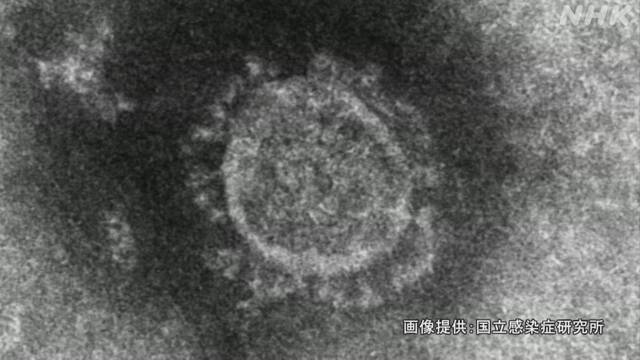To announce "10 knowledge" of the new corona Summarize the latest information Ministry of Health, Labor and Welfare October 29, 19:16
The Ministry of Health, Labor and Welfare has put together the latest information on the characteristics and treatment of the new coronavirus and will soon publish it as "10 knowledge", and summarized the plan on the 28th.
1. The number of diagnoses
As of the 27th, about 96,000 people, or 0.08% of the population, have been diagnosed as infected in the country.
The majority are in their 20s, which is equivalent to 0.2% of the population in their 20s.
2. The rate of aggravation / death
Of those diagnosed with the new coronavirus, the proportion of people who become severely ill or die is high in the elderly and low in the young.
Analyzing the data from June to August, 0.3% of people in their 50s or younger were in their 50s or older, while 8.5% were in their 60s or older.
0.06% of people in their 50s or younger and 5.7% of people in their 60s or older died.
In addition, the rate of severe illness and death is lower than before.
Comparing January-April and June-August, the number of people who became severely ill decreased from 9.8% to 1.62%, and the number of people who died decreased from 5.62% to 0.96%.
3. People who are prone to becoming severe
Elderly people and people with underlying illnesses are more likely to become severely ill.
The severity rate by age group is based on people in their 30s,
▽
0.5 times for those under 10 years old
▽
0.2 times for
teens
▽
0.3 times for
20s
▽
4 times for 40s
▽
10 times for 50s
▽ 60s 25 times
▽ 70s 47 times
▽ 80s 71 times
▽ 90s and over 78 times.
In addition,
people with six underlying diseases
are
▽ chronic obstructive pulmonary disease
▽ chronic kidney disease
▽ diabetes
▽ hypertension
▽ cardiovascular disease
▽ obesity.
It is not clear whether pregnant women and smokers are likely to become seriously ill, but caution is required.
4. The number of diagnoses is larger than overseas
The number of infected people and the number of deaths per capita in Japan remains at a low level compared to the global average and major countries.
5. The period of infection
It is said that people infected with the new coronavirus may infect other people from two days before the onset of the disease.
It means that there is a possibility of infection for about 7 to 10 days after the onset.
In particular, it is thought that the amount of virus excreted increases immediately before and after the onset.
For this reason, infected people need to make efforts to prevent infection, such as refraining from going out unnecessarily and urgently even if they have no symptoms.
6. What is the rate of spreading the infection?
Of those diagnosed as infected, less than 20% are thought to have infected other people.
For this reason, if one infected person does not infect many people, the epidemic can be suppressed, so wear a mask when interacting with people, and refrain from going out unnecessarily if you are not feeling well. Is important.
7. To prevent the spread of infection
The new coronavirus is mainly transmitted by droplet infection and contact transmission, and the risk of infection increases especially in the "three dense" environment.
As a scene where the risk of infection is particularly high
▽ Social gathering with drinking
▽ Large number of people and long-term eating and drinking 3 Conversation without mask
▽ In addition to communal living in a small space
▽ Rest room and smoking area when changing places, The changing rooms are listed.
8. The type of inspection is
Tests include PCR tests, quantitative antigen tests, and qualitative antigen tests using a simple kit to check if the virus is present in the body and is infected.
Depending on the type of test, not only the wiping solution at the back of the nose, but also saliva and the wiping solution at the entrance of the nose can be used for the sample.
In addition, the antibody test is for checking if you have been infected in the past, and cannot be used for the purpose of checking if you are infected at the time of the test.
9. How to treat
In mild cases, it often recovers spontaneously only by follow-up, and when necessary, "symptomatic treatment" is performed to suppress the symptoms with antipyretics.
People who cannot breathe sufficiently may be given a domestically approved antiviral drug such as "remdesivir", and if it does not improve, intensive care may be given with a respirator.
Due to the establishment of such treatment methods, the rate of death of people admitted to medical institutions is also decreasing.
After June 6, the percentage of people who were seriously ill at the time of admission
was 0% for those in their
40s, 1.4% for those in their 50s and 60s,
20.8% for those in their 70s and above, and 10.1% for all ages. I am.
10. Practical application of vaccine
Numerous studies have been conducted in Japan and overseas with the aim of early commercialization of vaccines, and some have already entered clinical trials.
On the other hand, it is not yet known whether the vaccine under development can actually prevent the onset and aggravation.
In addition, vaccination generally causes health hazards due to side effects, although it is extremely rare.
For this reason, we are also confirming the side effects of the new coronavirus vaccine that is currently under development.

